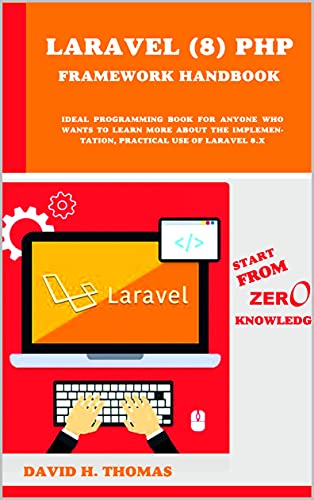Download This PDF Book :Topics in Algebra, 2nd Edition (1975) (Wiley International Editions) by I. N. Herstein, for free.
Preface to the Second Edition
I approached rev1smg Topics in Algebra with a certain amount of trepidation. On the whole, I was satisfied with the first edition and did not want to tamper with it.
However, there were certain changes I felt should be made, changes which would not affect the general style or content, but which would make the book a little more complete. I hope that I have achieved this objective in the present version.
For the most part, the major changes take place in the chapt¥r on group theory. When the first edition was written it was fairly un- common for a student learning abstract algebra to have had any previous exposure to linear algebra. Nowadays quite the opposite is true; many students, perhaps even a majority, have learned something about 2 x 2 matrices at this stage. Thus I felt free here to draw on 2 x 2 matrices for examples and problems. These parts, which depend on some knowledge of linear algebra, are indicated with a #.
In the chapter on groups I have largely expanded one section, that on Sylow's theorem, and added two others, one on direct products and one on the structure of finite abelian groups.
In the previous treatment of Sylow's theorem, only the existence of a Sylow subgroup was shown. This was done following the proof of Wielandt.
The conjugacy of the Sylow subgroups and their number were developed in a series of exercises, but not in the text proper.
Now all the parts of Sylow's theorem are done in the text materi9-l.
In addition to the proof previously given for the existence, two other proofs of existence are carried out.
One could accuse me of overkill at this point, probably rightfully so. The fact of the matter is that Sylow's theorem is important, that each proof illustrates a different aspect of group theory and, above all, that I love Sylow's theorem.
The proof of the conjugacy and number of Sylow subgroups exploits double cosets. A by-product of this development is that a means is given for finding Sylow subgroups in a large set of symmetric groups.
For some mysterious reason known only to myself, I had omitted direct products in the first edition. Why is beyond me. The material is easy,
straightforward, and important. This lacuna is now filled in the section treating direct products. With this in hand, I go on in the next section to prove the decomposition of a finite abelian group as a direct product of cyclic groups and also prove the uniqueness of the invariants associated with this decomposition.
In point of fact, this decomposition was already in the first edition, at the end of the chapter on vector spaces, as a consequence of the structure of finitely generated modules over Euclidean rings.
However, the case of a finite group is of great importance by itself; the section on finite abelian groups underlines this importance. Its presence in the chapter on groups, an early chapter, makes it more likely that it will be taught.
One other entire section has been added at the end of the chapter on field theory.
I felt that the student should see an explicit polynomial over an explicit field whose Galois group was the symmetric group of degree 5, hence one whose roots could not be expressed by radicals. In order to do so, a theorem is first proved which gives a criterion that an irreducible poly-nomial of degree p, p a prime, over the rational field have SP as its Galois group.
As an application of this criterion, an irreducible polynomial of degree 5 is given, over the rational field, whose Galois group is the symmetric group of degree 5.
There are several other additions. More than 150 new problems are to be found here.
They are of varying degrees of difficulty. Many are routine and computational, many are very djfficult. Furthermore, some inter-polatory remarks are made about problems that have given readers a great deal of difficulty. Some paragraphs have been inserted, others rewritten, at places where the writing had previously been obscure or too terse.
Above I have described what I have added. What gave me greater difficulty about the revision was, perhaps, that which I have not added.
I debated for a long time with myself whether or not to add a chapter on category theory and some elementary functors, whether or not to enlarge the material on modules substantially. After a great deal of thought and soulsearching,
I decided not to do so. The book, as stands, has a certain concreteness about it with which this new material would not blend.
It could be made to blend, but this would require a complete reworking of the material of the book and a complete change in its philosophy-something I did not want to do.
A mere addition of this new material, as an adjunct with no applications and no discernible goals, would have violated my guiding principle that all matters discussed should lead to some clearly defined objectives, to some highlight, to some exciting theorems. Thus I decided to omit the additional topics.
Many people wrote me about the first edition pointing out typographical mistakes or making suggestions on how to improve the book. I should like to take this opportunity to thank them for their help and kindness.
Contents:
1 Preliminary Notions
2 Group Theory
3 Ring Theory 120
4 Vector Spaces and Modules 170
5 Fields 207
6 Linear Transformations 260
7 Selected Topics
About The Book:
Categories: Mathematics
Year: 1975
Edition: 2nd
Publisher: John Wiley and Sons (WIE)
Language: English
Pages: 401
File: PDF, 10.40 MB
Free Download the Book: Topics in Algebra, 2nd Edition (1975) (Wiley International Editions)
PS: Share the link with your friends
If the Download link is not working, kindly drop a comment below, so we'll update the download link for you.
Happy downloading!








